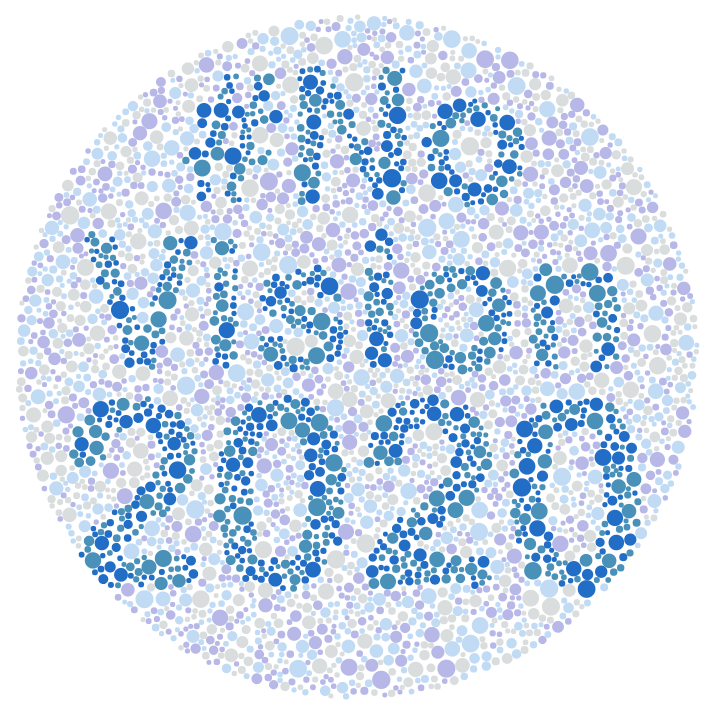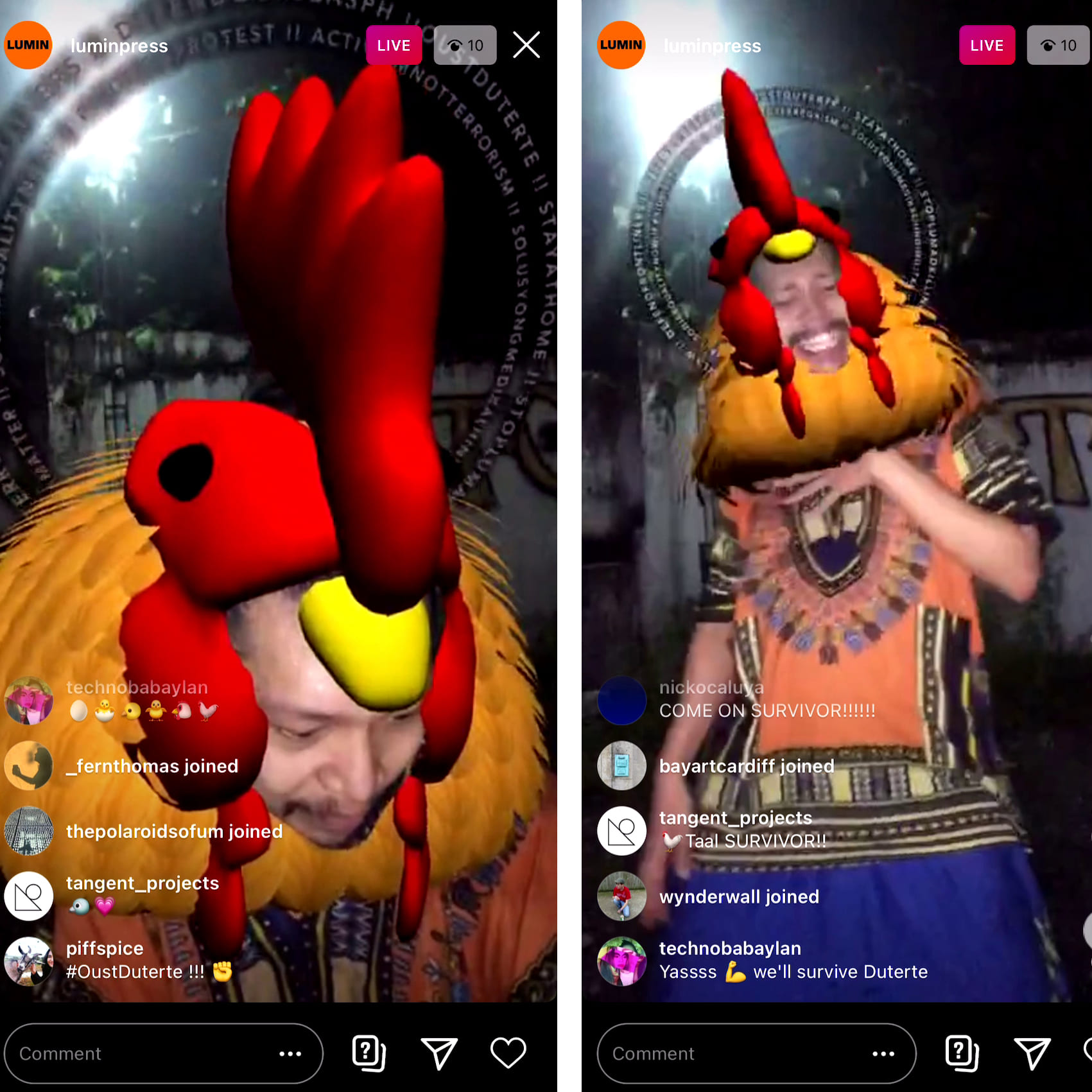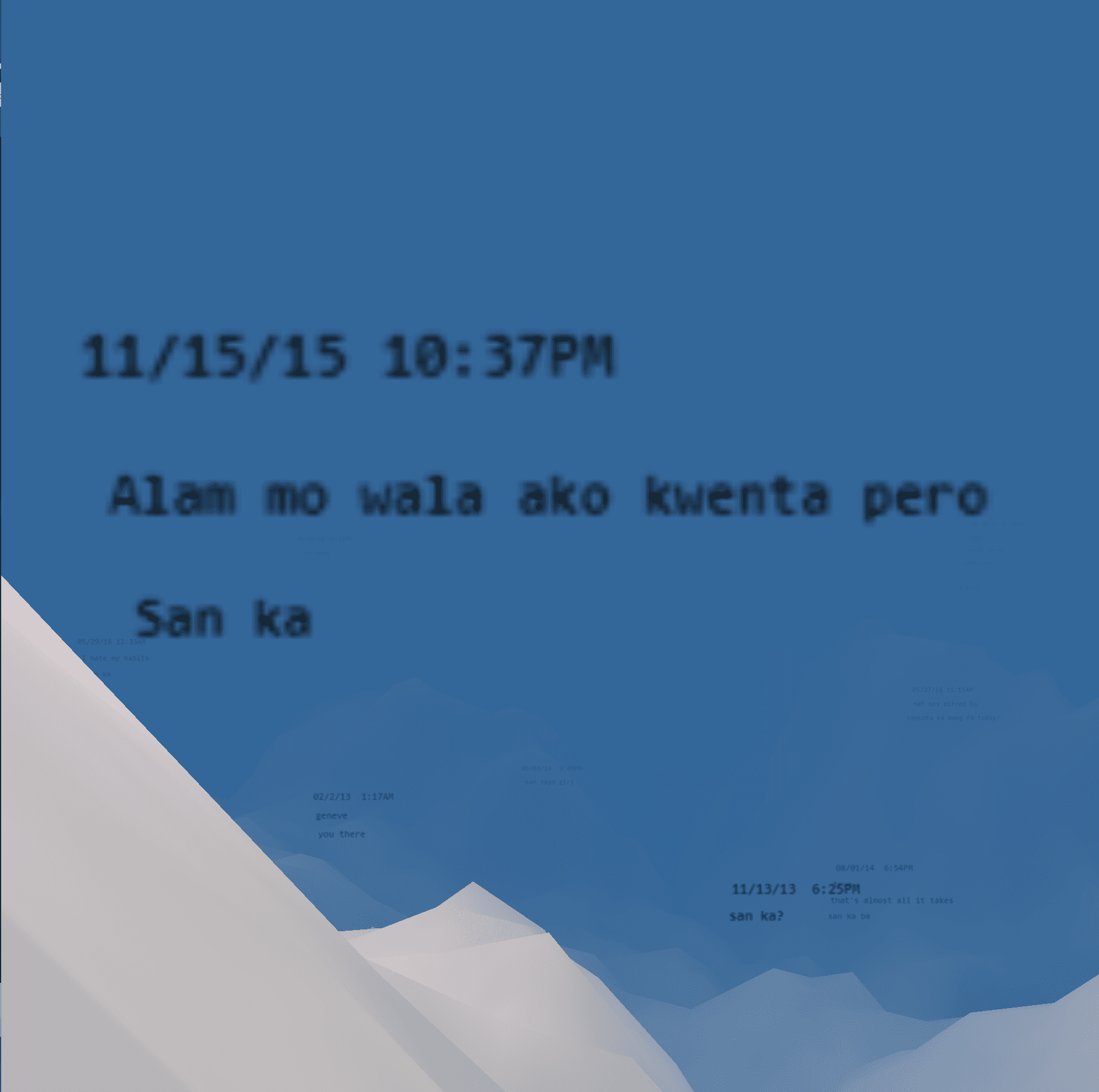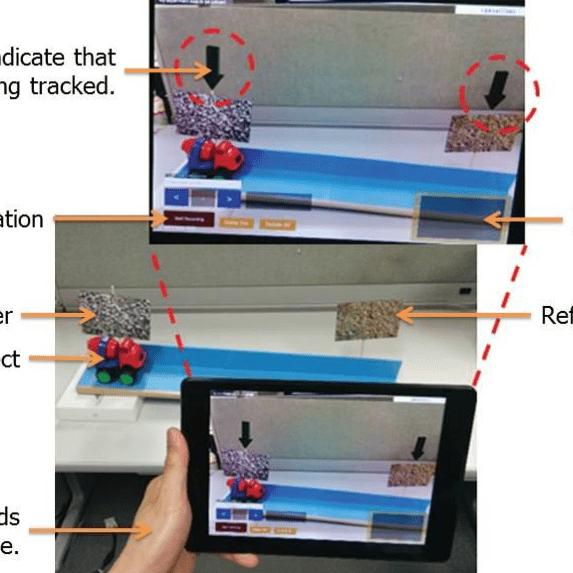Nicko Caluya x Curare Art Space (via John Alexis Balaguer
Poetry and Photography, 2014-2021
From Lex: "# NO VISION 2020 is a selection of 150 (and counting) keypad poems and phone photographs from Caluya’s personal online account confronting the current state of worry and anxiety of the ambition of a 2020 vision, by capturing smallness in all its sacredness so that in archiving instances in poetic forms from history and the programming of contemporary devices, @nickocaluya might withstand the unknown mortal future, and see the moment as it is."
Alfred Marasigan x Nicko Caluya x Riko Laguilles
Livestream ritual, 20 mins, Lumin Press, 2020 (top and middle row)
From Alfred Marasigan's website: "Taal Survivor is part of a transmedial project with Tangent Projects’s Volery primarily concerning birds and recently encountering a certain Banaba rooster as the sole survivor of the 1911 Taal Volcano eruption in Batangas, Philippines. In conjunction with serendipitous research, online archives, oral histories, Instagram engagements, and a journal publication, “Taal Survivor” anthrozoologically summons the alleged rooster via livestreaming to help illuminate intersections between presence, time, spectatorship, resilience, solidarity, gender, and image-making."
Alfred Marasigan x Nicko Caluya
Exhibited at Spatial Territories, University of the Philippines Diliman's Bulwagan ng Dangal, 2016/12/3-16.
Marasigan’s interactive video projection merges parallel but often conflicting experiences of navigating physical and virtual spaces. It references cloud computing and clouds as the anti-perspectival feature of paintings. To the artist, the ethereal projection represents the fleeting nature of consciousness, the moment, memories, beauty, art, and life; its infinity acts as a counterpoint to cartography – no map is created and no spatial concern is resolved; being lost is simply articulated visually (and textually, by the annotations). The annotations signify the semi-real components of the artwork; serving as anchors or “locations” on the cloud field, they attempt to ground the viewer to their own “San ka” (Where are you?) messages. The time stamps from the artist’s collection of messaging data augment this grounding, but serves as foil to the unresolved of space (versus time as dimensions of “reality”).
Resty Collado x Marc Ericson Santos x Nicko Caluya
Resty C. Collado, Nicko R. Caluya, and Marc Ericson C. Santos, “Teachers’ Evaluation of Augmented Reality-Based Motion Graphing Motion,” Journal of Physics: Conference Series, 1286, pp. 1-9. https://dx.doi.org/10.1088/742-6596/1286/1/012051. (Journal)
(Abstract) This research presents the results of the initial evaluation of MotionAR: an augmented reality (AR) based motion graphing application for physics classes. MotionAR uses AR trackers to measure relative motion between objects, hence producing a motion graph. The subject of the evaluation is an improved version of our application that addresses recommendations from the first prototype. Among these recommendations were: the use of words instead of arrows to identify targets, the use of the Cartesian coordinate system, and previews of the displacement vs. time, velocity vs. time and acceleration vs. time graphs. In-service teachers used a 10-item questionnaire for evaluation. The teacher-evaluators come from diverse educational backgrounds (rural and urban schools, 0 to 24 years in teaching, no e-learning model in school vs 1:1 studentto-tablet PC ratio, science vs. non-science majors) which makes the initial evaluation a good baseline data. This ongoing research will present the lessons learned from the evaluation, including insights in developing AR applications for physics classes, and recommendations for teaching motion graphs utilizing AR.



